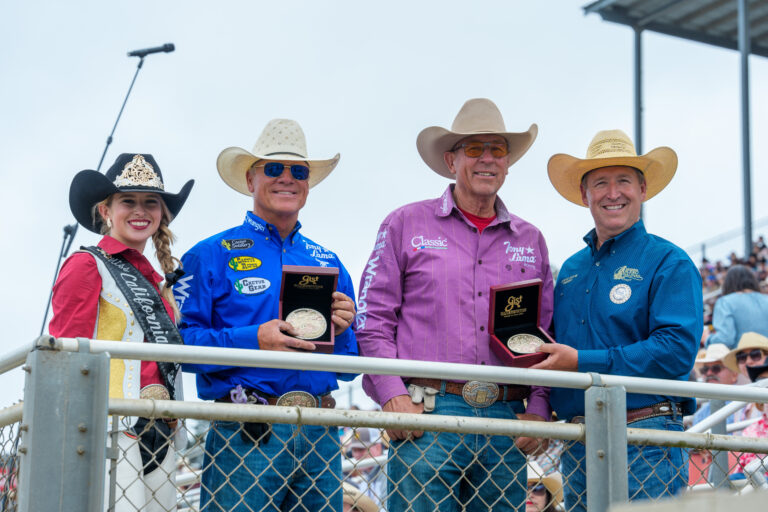I’ve done schools for more than 30 years, and there are some important things that have to happen to make a successful heeling run. One of the hardest for someone who teaches heeling is to really explain and get the message over to a student who’s possibly having trouble with the delivery of his or her heel loop. A lot of people have a tough time understanding the concept of what needs to take place in the delivery and placement of the rope to have a consistently good heel loop.
When a steer leaves the ground, then hits the ground again, it happens fast. How you deliver your loop is a trained reaction to what you’re seeing. By the time the steer’s hind feet leave the ground and then hit the ground again, the delivery of the loop has to fire correctly—correctly timed and placed.
A lot of people see a good photo taken of a heeler throwing a really nice-looking loop on the feet, and the steer’s jumping into it. It’s usually taken right at the time when that loop is still there and the heeler’s right hand is straight down, and his hand is flat because he’s starting to get his slack so his hand’s rolling over the top of the rope to pick his slack up. It’s kind of a misconception that your whole delivery is in that flat-hand position.
Clay O’Brien Cooper Explains How He’s Heeling Faster Than Ever
What people don’t realize is that the start of the delivery is just as important as the end of the delivery. The start of the delivery has to position the rope so that the bottom of the loop reacts correctly. If that takes place, then you can release the rope with your hand flat to get your slack, and the loop will work the way it’s supposed to work.
If every good heeler’s hand is pretty flat to roll over and grab his slack at the end of the delivery, the start of the delivery is equally universal. If you look at a photo at the start of the delivery, with the tip of the rope still back behind you as you’re starting toward the feet to deliver, the common characteristic is that everyone’s right elbow is pointed toward the right hock of the steer at the start of the delivery process. That’s the move you have to make in order to get the bottom of the rope in the correct position.
The delivery is kind of a twofold process. Some guys explain that you should drop your elbow and come in there in the shaking-hands position with your thumb on top and pinky on the bottom. Other teachers will say you need to turn your hand flat on your delivery, with your thumb and pinky at the same height.
Roping Progress Doesn’t Happen Overnight with Clay O’Brien Cooper
What I find is that really both things have to happen. At the start of the delivery it’s more of a hand-shaking position, then at the end of the delivery it’s more of a hand-shaking position but then rolling your hand flat to release your loop. So it’s really both. As you come out of your swing, there’s kind of a two-motion wave it takes to perform that delivery correctly. You’re bringing that loop and setting it on the ground using both of those things running together into one motion.
I’m personally more mindful of the bottom strand of my loop coming under the feet. That’s what I focus on. But I also turn my hand flat to release my rope, which is the function that makes my loop work. That’s something that I always work on. I throw a lot of loops. I rope the dummy on the ground, I rope a stationery dummy horseback, I rope a Heel-O-Matic, I rope a burro, and I rope live cattle. So I’m always practicing my delivery—over and over again for the last 50 years. Because to be good at it, you have to be doing it all the time to make it feel right and work right.











